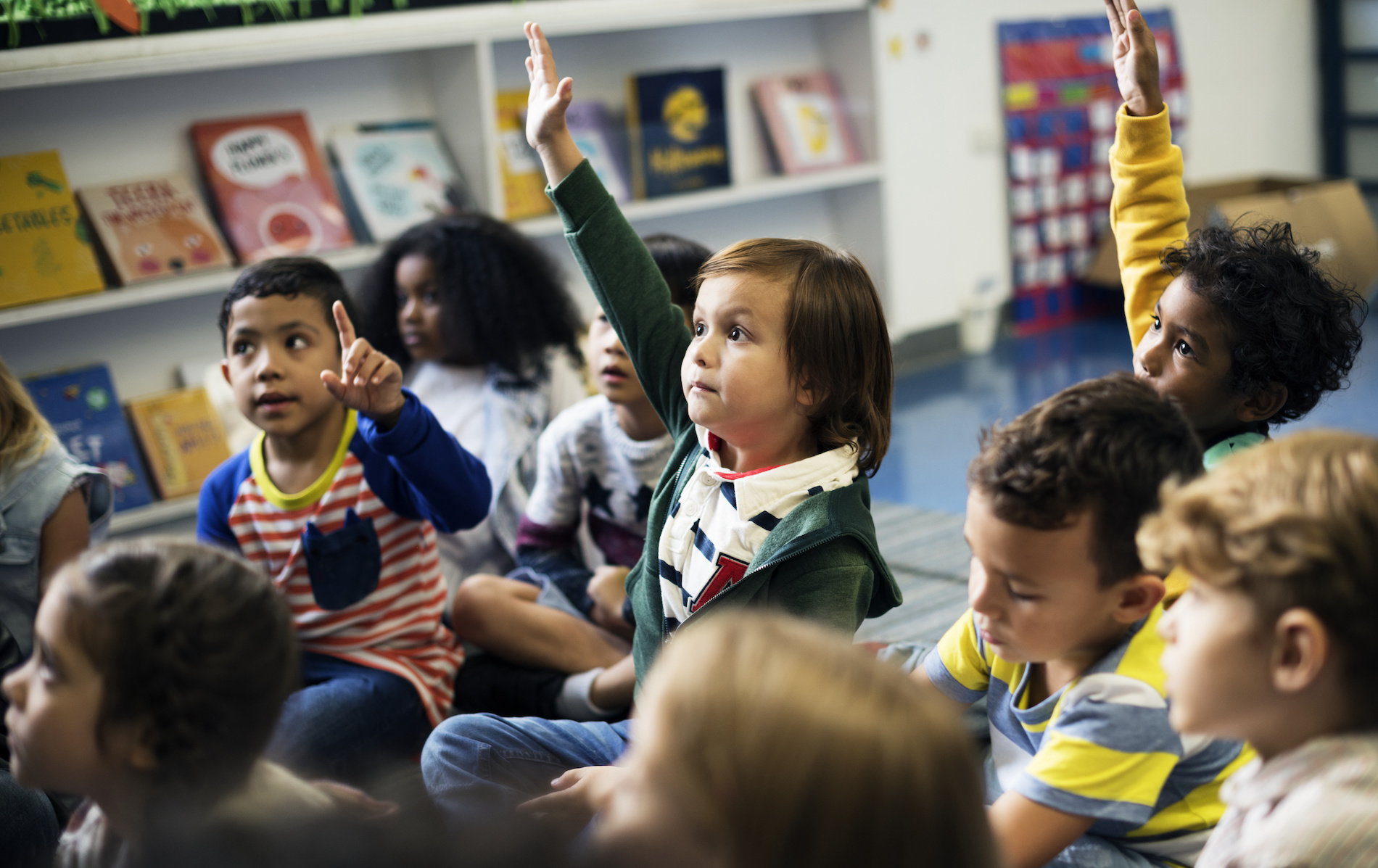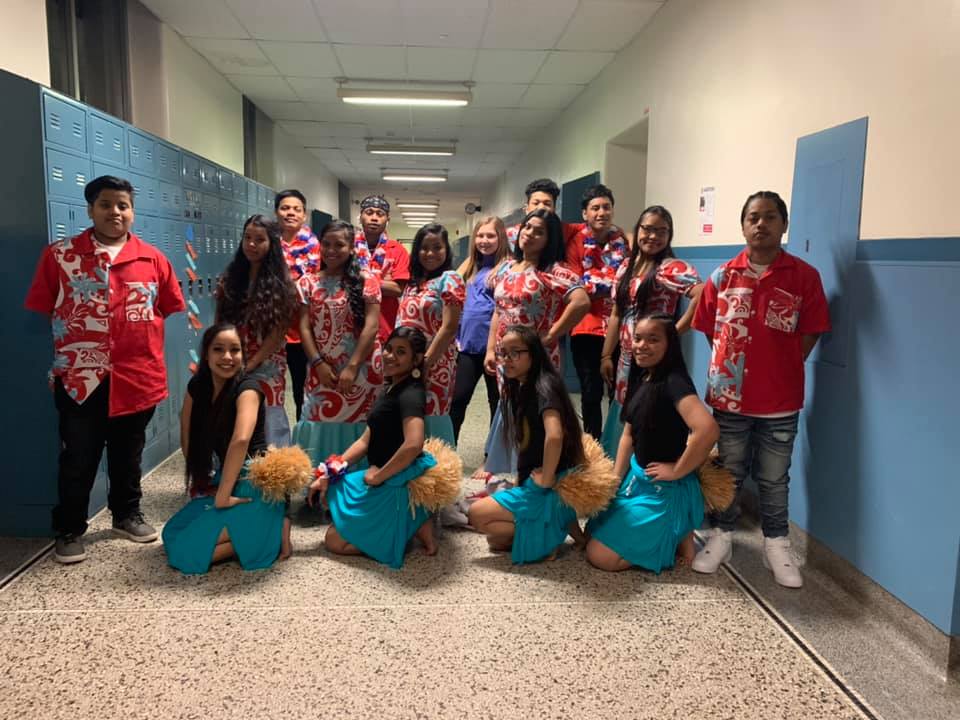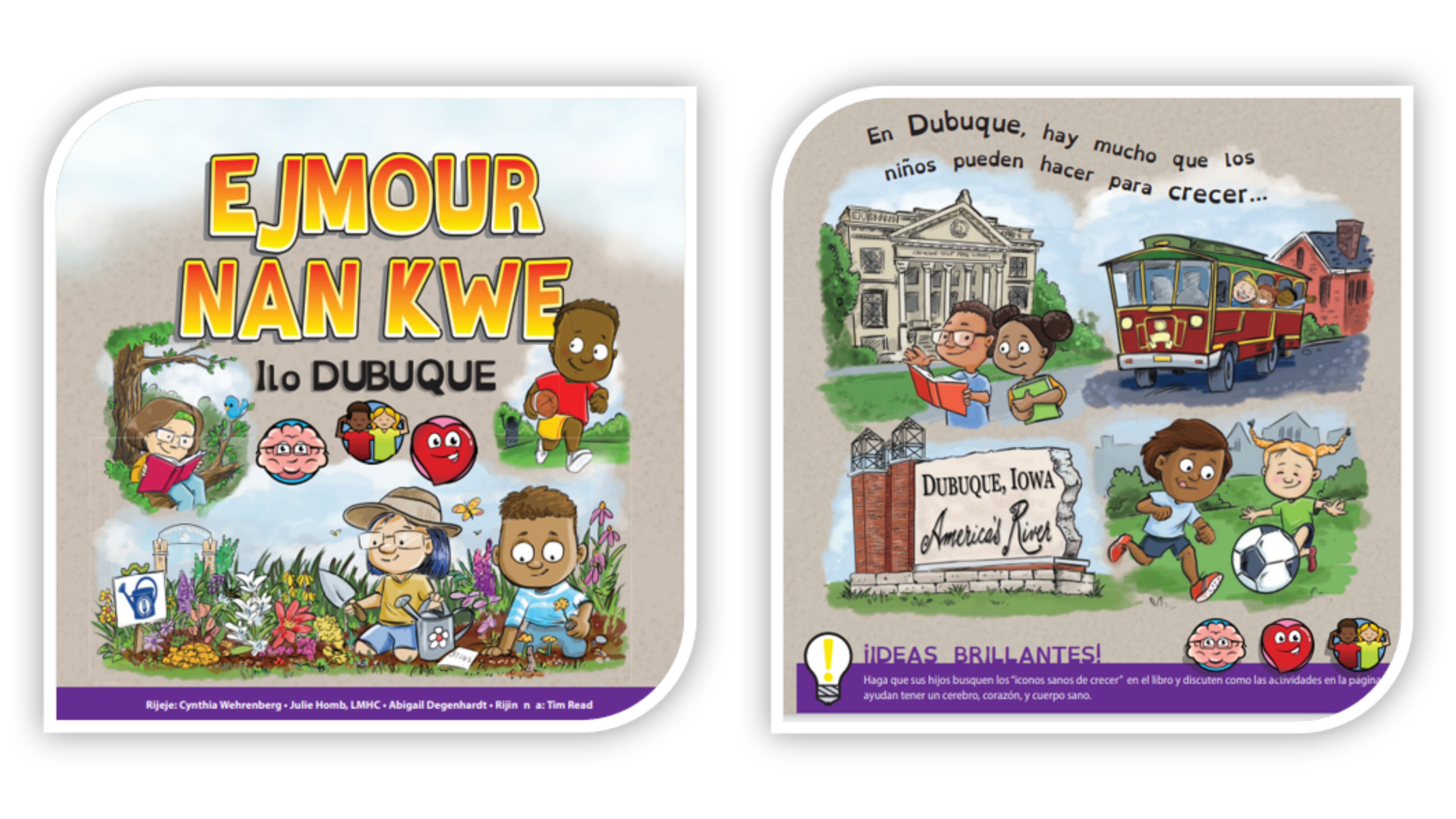Recommendations for Education and Youth Support

Feedback from parents, educators, and students seemed to show the value of having paraprofessionals, mentors, and other staff in the schools focused on supporting English language learners. It is especially valuable to have staff that share the cultural and linguistic identities of immigrant populations. Having individuals at local schools who have linguistic and cultural knowledge can be a major benefit for students being able to learn and to understand how best to succeed at school. These staff also serve as connectors for parents, utilizing their existing relationships to build bridges between the schools and families, which can be valuable given the importance of parent engagement in a child’s education. And staff can also provide immigrant children with a role model demonstrating to students that they can succeed at their studies and find a good job that gives back to their community. This is especially important because some interviews indicated that certain populations of immigrant youth (such as, but not limited to, unaccompanied minors and girls living in rural areas) were at a higher risk of giving up on aspirational thoughts around education, and instead focusing on maximizing immediate earnings at lower paying jobs.
Many schools are limited in which staff they are able to hire, and there are teacher and staff shortages at many of the schools throughout the region. Most schools cannot simply increase the number of staff that serve immigrant youth without significant changes in funding, state policies, etc. With that in mind, beyond simply increasing the number of staff serving immigrant students, this report recommends:
- Schools consider language ability, cultural knowledge, and connections within immigrant communities as highly valuable when hiring new staff.
- Local leaders and other stakeholders should advocate for increasing funding and support for students from immigrant families and English Language Learners.
- Community members and partner organizations could pursue creative solutions to helping provide additional mentoring and educational support for immigrant youth. An example of such a program is discussed in the next recommendation.
In early 2021, the Dubuque Community School District, NICC, and the Community Foundation partnered together to create the Guatemalan Mentor program, with additional support from Catholic Charities and other local organizations. This program was created in response to the challenges facing unaccompanied Guatemalan minors in the Dubuque Community School District. Many come to Dubuque speaking almost no English and very little Spanish, but instead Mayan dialects such as Ixil, K’iche’, and Q’anjab’al. A majority of these students struggle in school as they try to learn both English and Spanish while also studying math, history, and other subjects in a language they don’t fully speak. Mayan dialects are infrequently spoken in the United States, and so it can be very difficult to find interpreters. In addition, many of the dialects are traditionally more of oral instead of written languages, and so there are few translated books or documents available for students. All of this creates a challenging learning environment for Guatemalan students.
The Guatemalan Mentor program was designed to help this situation by having a Guatemalan individual who speaks Ixil (the most commonly spoken dialect in Dubuque) placed into one of the high schools in order to help support Guatemalan students. However, the program experienced a problem because the School District was unable to hire the Guatemalan individual due to insufficient educational credentials. In order to address this challenge, the Community Foundation provided a grant to NICC, who hired the individual to serve as a volunteer mentor at the School District. At the same time, the individual took HSED classes at NICC with the goal of receiving her high school degree, and then potentially being hired by the School District full time.
The mentor had a significant impact on Guatemalan students and was able to provide additional help and support to them during class. Perhaps even more importantly, the mentor was able to build an additional connection between the school and the students, elevating challenges, passing along information, and helping create mutual understanding where there normally would have been a lack of communication. The School District was very pleased with the additional assistance, and the Guatemalan mentor expressed pride in being able to support students. She continued in her position through the beginning of 2022.
Continuing programs such as this would provide a lot of value for both schools and immigrant students. Being able to place people within local schools and pay them for their work provides and increased level of engagement and support for students who otherwise struggle in an unfamiliar environment. Additional funding should be raised to support this type of project.
Note: This recommendation resulted from a collaboration between Crescent Community Health Center and the Community Foundation as part of an effort hosted by the National Association for Community Health Centers.
One of the successful initiatives in the past several years aimed at immigrant youth has been the Pacific Islander Club at Hempstead and Dubuque Senior high schools. Operating as primarily an afterschool club for Pacific Islander students, the group has had several positive effects. It has given students a sense of identity and belonging, whereas sometimes immigrant students feel disconnected from school due to cultural or linguistic differences. It has enabled students to participate in larger activities, such as the students putting together a presentation about the Marshall Islands, followed by a meal with Marshallese food. And it has provided a place for students to gather after school and study, play music, and engage in other productive activities. Feedback from both Marshallese students and parents was very positive, with some asking for the Club to be expanded to middle school children as well.
While the Pacific Islander Club is limited in terms of its scope and resources, it also shows a potential opportunity: immigrant youth taking a civic role in supporting their own communities. Empowering immigrant youth to serve their own communities can produce a number of important benefits:
- Provides young people with additional outlets for meaningful and compelling activities, which could improve their schoolwork, build knowledge and connection with their city and communities, and create a structured and engaging opportunity for students outside of school.
- Leverages individuals with cultural knowledge, linguistic skills, and existing relationships with immigrant communities to help produce positive programming.
- Develops connections between young immigrants and local colleges, nonprofits, and other organizations that might support the work. This can be very important for helping develop the next generation of immigrant leaders and allowing them to network with key stakeholders.
- Allows for data and information collected by local organizations about immigrant communities to be given back to immigrant communities for their own use.
- Provides an avenue for potential benefits for students that can help their academic and work careers. The most obvious example is as a tool for building resumes and college applications, but could potentially include scholarships or access to leadership events for some students.

One of the most straightforward options for developing this type of group in Dubuque would be to build off of the success of the Pacific Islander Club and create a student group focused on working to support the Marshallese community. Such a program would be structured so that local organizations would provide the students with information and data about issues that are important to the Marshallese community, support for developing programming of the students’ choice around those issues, and venues for carrying out that programming. Crescent Community Health Center has explicitly stated its interest in providing data and support to the students, and other organizations have expressed their interest as well.
During this research, several ideas for projects were raised that give examples of the kind of activities that this kind of group might undertake:
- Students film Marshallese language videos about important health issues, and those videos are played on waiting room televisions at Crescent or other health-care facilities (with English subtitles).
- Students create a presentation or performance of Marshallese culture, which is then hosted for both the Marshallese community and the larger population at local venues.
- Students learn how to cook nutritious meals, and then either lead classes for Marshallese families or post videos online under a new website.
For any communities that decide to develop a program like this, there are a few additional points that should be considered:
- Having a location to hold sessions will be important, especially if any specialized equipment is necessary (like video cameras). Holding meetings outside of school property may be the best option, though this would likely require the need to organize transportation.
- This kind of program would gain more support from students, parents, and school officials if it also created time for activities outside of the main project, such as help with studying or recreational activities. For example, it was thought that more Marshallese students would be interest if there was also an opportunity to play basketball together after the meeting. In Dubuque, the Boys and Girls Club (which has a gymnasium) expressed interest in supporting more Pacific Islander youth.
- During the research, both immigrant families and local stakeholders strongly believed that the group should be open to the wider public, and not just immigrant students. While the group could still focus on issues directly connected to the immigrant community, having students from different backgrounds, races, and ethnicities all working together on the project would be a huge benefit for building connections between students and helping the project impact the wider community.
- The program would likely require one or more adult leaders who could help direct activities, make connections with local organizations, and supervise what was taking place. This could potentially require raising additional funding.
- This program could potentially be replicated for many different immigrant populations, or for non-immigrant populations as well. A similar group could be developed for serving the Black community, Asian community, or another specific population. If initial implementations of this type of student program are successful, then stakeholders may want to consider piloting groups focused on other communities.
Early childhood reading proficiency is one of the most important indicators of a student’s educational outcomes. 3rd grade reading proficiency is a leading indicator predicting high school graduation and career success. Students not proficient by the end of 3rd grade are four times more likely to drop out of high school, while 88% of students who do not earn a high school diploma were struggling readers in 3rd grade. This is in large part because 3rd grade is around when students shift from learning to read, to reading to learn.[1]
The Covid-19 pandemic had a major impact on students throughout the region in terms of reading proficiency, but the impacts are especially troubling for children from immigrant families. At the end of 2021, only 9.42% of English learners in the Dubuque Community School District were reading at grade level proficiency, almost half the rate in 2019 prior to the pandemic (18.34%). 54.46% of Hispanic students were reading at grade-level, as were only 12.18% of Pacific Islanders.[2] Supporting early childhood reading education for these students will play a major role in their long-term educational outcomes.
Unfortunately, there are additional barriers that immigrant students face when it comes to reading proficiency. English language learners may struggle with reading and need additional support and practice to gain proficiency in a second language. But on top of that, some immigrant populations in Dubuque and the surrounding region also speak languages that are less frequently spoken in the U.S., resulting in fewer available books written in those languages. There are few pieces of children’s literature written in Marshallese and Mayan dialects, limiting how well non-English-speaking students and families can engage in literacy activities. On top of that, Marshallese and most Mayan dialects come from traditionally oral traditions. Reading in these languages may not be a familiar or common practice among many people within the community. This is especially true of Guatemalan Mayans, many of whom are most proficient at reading in English or Spanish, since Ixil and K’iche’ are not commonly written dialects. These challenges, taken with the disconnect from institutions and organizations that many immigrant families face, mean that promoting reading proficiency in immigrant populations is a difficult challenge.
One of the best ways to try to improve literacy for immigrant children is by engaging directly with families and social networks. Due to the limits facing schools and the barriers that already exist, local stakeholders should reach out to immigrant families and leaders to create a larger engagement in a child’s education. In addition, many immigrants live in multigenerational homes, meaning that parents, siblings, grandparents, and other relatives may be available to help support a child’s education. Involving key community leaders in educational efforts has also produced results (see models to consider). A concerted outreach to families may be the best means for engagement on reading proficiency.
Local stakeholders should also support the creation of more bilingual resources and their availability in schools, libraries, and other locations. The Community Foundation has produced a children’s book titled “Be a Healthy You! in Dubuque” that has been translated into both Spanish and Marshallese,[3] and there are lists online of other books that are written in Marshallese.[4] Having more books available that immigrant families can take advantage of is an important part of encouraging growth in literacy.

Communities should also consider dedicated literacy efforts focused on specific immigrant populations. While adding multilingual texts to existing literacy programs is an important step, utilizing specific teaching techniques and practices aimed at immigrant groups could produces the greatest results. The “models to consider” section includes potential techniques for Marshallese students that could be incorporated into a program.
Models to consider:
- The Pacific Islander population in Maquoketa has seen success by having strong community engagement for the education of their children. Local leaders are highly involved with the school district and participate regularly in conversations with school principals and parent-teacher conferences. This level of involvement has produced much better educational outcomes for students, and could be a valuable model to replicate, especially in areas with smaller communities with strong social connections.
- Melanie Carbine is a Doctoral Student in Multilingual Education and Literacy, Culture, and Language Education at the University of Iowa who has experience teaching in the Marshall Islands and expertise in educational techniques for Marshallese individuals. She considers the following techniques as possible strategies for improving literacy for Marshallese youth:
- Accessing a collection of bilingual Marshallese basal readers (textbooks used to teach reading) currently being developed in the Republic of the Marshal Islands.
- Emphasizing cooperative participant structures where children work in groups to read or write together (such as taking turns reading).
- Utilizing storytellers and incorporating storytelling in reading and writing.
- Incorporating oral presentations into literacy work (she notes that Marshallese are known as the speechmakers of the Pacific).
- She has had success translanguaging at the high-school level, meaning teaching in both English and Marshallese and having students utilize both languages in their work.
- She is also working on developing family literacy kits, Marshallese children’s books, a book of nursery rhymes, Marshallese/English magnet letter sets, and audio books.
- The 2Gen approach detailed by the Aspen Institute of engaging multiple generations in an immigrant family could be a valuable tool for helping build literacy. This approach is discussed more in Take a 2Gen Approach in the Outreach section.
This recommendation also appears as Recommendation 6 under Workforce and Employment
Providing immigrant students with clear pathways to family-sustaining careers should be a priority. Enabling immigrant students to pursue education and training that will connect them to high-paying, quality jobs will be a powerful driver in improving the livelihoods of immigrant families and boosting local economic growth. With immigrant populations being some of the fastest growing demographics in the region, it is critical that young people are able to be quickly and seamlessly connected to good jobs.
A population that should receive specific attention is local Guatemalan Unaccompanied Minors. A recent change now allows individuals with Special Immigrant Juvenile Status (SIJS) – a temporary status often pursued by Guatemalan unaccompanied minors – to get work authorizations. This is an important change, as it will allow many of these individuals to financially support themselves while they continue their court case. Because many of these individuals will be under the age of 18, it is very important that the community should engage with them and support them around work and career opportunities. Connecting these individuals to safe and well-paying jobs, as well as training and education that can lead to good career opportunities, is important for supporting this population and helping to provide a sustainable economic future.
Some local organizations (including NICC, the Dubuque Community School District, and Tri-State VIATS) are already working on how to best engage and support these students. This work should be continued, with an emphasis put on skills training programs for those students who are struggling to get their high school degree. Previous education levels can vary significantly for unaccompanied minors who come to Dubuque, and so helping connect those who are struggling with good career opportunities is important.
There are also other potential options that should be considered when it comes to developing education and workforce training programs for these SIJS recipients:
- Pair the unaccompanied minors, and especially girls who may face greater barriers to obtaining well-paying career opportunities, with appropriate mentors in their field of study. For example, if Guatemalan girls are considering NICC’s welding program, connecting them with a female welder from a local business who can provide additional support could provide a valuable asset in helping the participant complete their training program.
- Utilize a “Guatemalan Mentor” position to help focus on career opportunities for students still in school. The Guatemalan Mentor position is described in more detail in 2. Establish a Guatemalan Mentorship Program above.
A challenge for this community will be to help these SIJS recipients, many of whom are still in high school, to balance the need to work with the need to study for school and improve their English. An area for future consideration would be designing a “fellowship” or work program where students were paid a living wage, learned a skill on the job, and were provided with time and support for schoolwork and/or English lessons. Such a program would need a strong host organization and would likely require additional financial support.
As immigrant populations continue to increase within the community, it is important that school environments are welcoming places for those students. A large part of this is students being able to see themselves reflected in the learning and curriculum that is taught in schools. Research indicates that representation of children in toys, books, media, and the classroom can have a significant impact on their development and well-being.[5] Yet frequently immigrant populations are significantly underrepresented in textbooks, literature, and school curriculums. Schools across the region have made strong efforts to increase welcoming efforts for immigrant students and include greater representation in curriculum and materials. But a significant gap still exists.
Schools should work to include classroom decorations, reading materials, celebrations, and other efforts that reflect the growing diversity within the community. This can be as simple as making sure there are Latino dolls at a preschool or celebrating Marshallese Constitution Day near the end of the school year. Making sure immigrant students feel recognized and represented in school will not only make them feel more welcome but may result in improved educational outcomes.
Models to consider:
- Sioux City, Iowa, has one of the highest percentages of students from immigrant families of anywhere in the state. As a result, they have done a lot of work adapting their school district to be welcoming and support immigrant students.
This recommendation also appears as Recommendation 3 under Cultural Events
Interviews and discussions during the Community Assessment suggest that connecting international college students to cultural organizations should be a focus for the region. International students are often eager to engage with new cultural offerings, but their unfamiliarity with their new home and barriers like expense and transportation can often keep them from seeking out local opportunities. The region would benefit from this population developing closer ties with local arts and culture organizations. Helping attract and retain talented international students and convincing them to make this region their long-term home will significantly benefit the local economy, culture, and community.
Outreach to this population should involve partnership between arts and culture organizations and local higher education institutions, with a specific focus on connecting to international students (or at least students who are new to Dubuque). Making the opportunities easily accessible and highly visible will be important for students who are trying to adjust to a new home. In addition, reducing barriers like transportation or the cost of attendance and arranging events at times that are the most convenient for students will be important for making programming successful. Doing this could lead to great long-term benefits as international students build a relationship with the local community.
For more information about international student retention and H-1B visas as part of workforce development, see Provide Workforce Support to International Students in the Workforce and Employment section.
[1] Weyer, Matthew and Jorge Casares. “Pre-Kindergarten-Third Grade Literacy.” National Conference of State Legislatures. 17 December 2019. Available at:
[2] Iowa School Performance Profiles, 2019 and 2021. Available at: https://www.iaschoolperformance.gov/ECP/Home/Index
[3] For more information, see: https://dbqfoundation.org/news/new-childrens-book-be-a-healthy-you-in-dubuque
[4] “Marshallese children’s books.” Marshallese Manit. (www.marshallese-manit.org). Available at: https://marshallese-manit.org/post-library-jukle/marshallese-childrens-books/
[5] Barga, Arianna. “The importance of children’s representation in literature and media. Humanium. 22 March 2022. Available at: https://www.humanium.org/en/the-importance-of-childrens-representation-in-literature-and-media/
To return to the section on Issues Facing Immigrant Communities, click here. To explore this section more deeply, use the following links:
- For Case Management, click here
- For Education and Youth Support, click here
- For Health, click here
- For Housing, click here
- For Legal Assistance, click here
- For Translation and Interpretation, click here
- For Workforce and Employment, click here
To read a discussion regarding Ongoing Collective Work on Immigration, click here
For a discussion of Building Connections with Immigrant Communities, click here
For a list of Priority Recommendations, click here
To return to the Welcome Page, click here
